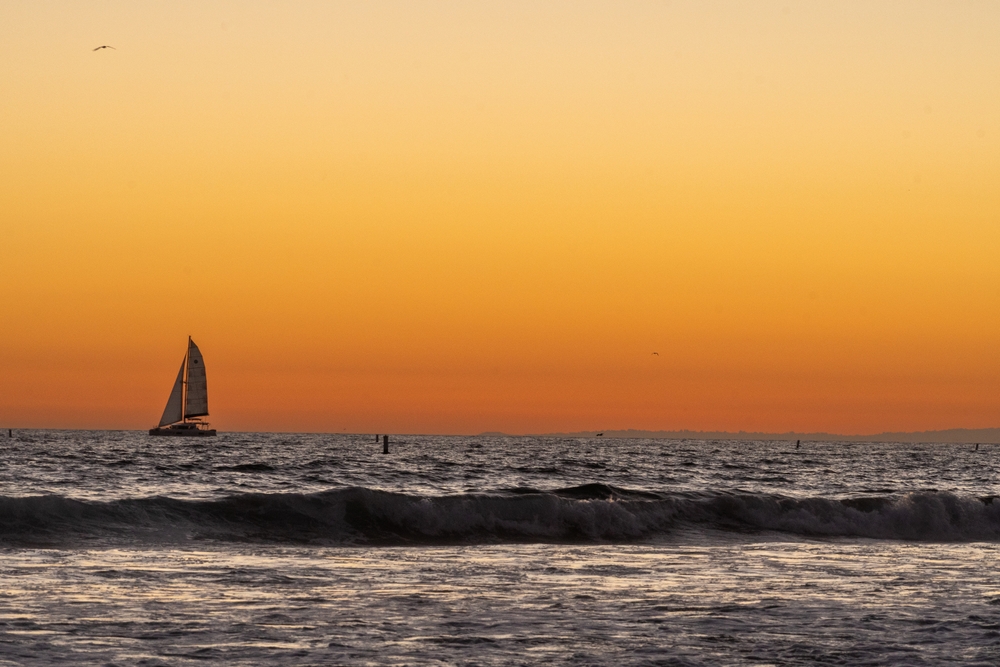Every summer, families wait anxiously to take that prized week off work to dig their toes into the sand at their beach of choice. This iconic American family vacation has, for generations, been the event that adults and children alike look forward to. As the years go by and more private homeowners want to own a seaside paradise, the interpretation of public beach access has become sandy, to say the least.
The conversation isn’t new. Whether it’s a coastline, mountains, or rivers, there has always been debate about whether people can ever really own a natural wonder. As you plan your own summer getaway, take note of the ways that various states regulate their shorelines.
Why Is Beach Access Controversial?
Public beach access faces occasional contention for the same reasons that mountains and open, undeveloped lands do. The balance between leaving nature untouched for the public benefit collides with private interests, whether that’s real estate development or mining.
Picture a homeowner whose property borders a neighborhood beach. They may feel that public access to that beach results in the space being mistreated with litter or unsavory behavior. Plus, if a beachgoer was injured in a place that borders public and private land, it can make homeowners feel like they’re in very murky waters.
On the other hand, it’s hard for many to understand how any entity could say they definitively own a natural wonder that’ll outlive them. It’s argued that these spaces should be preserved for the enjoyment of all and not just one person or household.
The U.S. has an established legal principle regarding this concept, called the Public Trust Doctrine. This legal mandate centers on the fact that some lands and waterways aren’t meant for private consumption and, instead, should be preserved in perpetuity for all to use. This logic is a reason why private entities can’t own a portion of an ocean.
This doesn’t mean that the Public Trust Doctrine hasn’t been challenged over time, with both sides of the argument nabbing a win every so often.
Public vs. Private Beach Access
While it may seem like splitting hairs, many states determine public beach access on shores that border private property based on tide levels. Some states only permit the public the right to all beaches at the low tide line or within the actual water. Others regulate that the public only has the right to a beach up to the high tide mark, which is the highest level where sand is damp, but where one isn’t actively walking in the water. Other states guarantee the public access to a beach whether it’s wet or dry sand, period.
Regional Variability
Over the years, several states have seen lawsuits from private property owners seeking to limit public access to their slice of coastline, with varying results. Due to that fact, some states have more flexibility around access to public beaches than others do. No two states are going to be alike, but there can be regional commonalities due to geography and the body of water in question.
How States Regulate Their Coastlines

The question of public beach access in a variety of states is an active conversation that shifts with time. Here are the states with existing parameters around their public beaches that you’ll want to take note of for your summer vacation.
Florida
Historically, the state of Florida has maintained that the public has the right to use all coastlines up to the high water lines that border private property, or where the damp sand ends. However, the state has seen various lawsuits over the past decade from private property owners who’ve seen the breaking surf sneak closer to their homes, which decreases the buffer zone between their property and the high water line.
Florida legally requires the public to have “reasonable” access to beaches, which can be widely interpreted. The state has 825 miles of sandy beaches spanning from the Atlantic Ocean to the Gulf of Mexico, and currently offers public access to 90 percent of coastal access points in the state.
New Jersey
New Jersey considers public beach access to be up to the high water line, just like Florida. In 2019, the state codified in its legislature that the public has access to all shorelines for business, navigation, and relaxation purposes. Part of the energy behind the legislation stemmed from the fact that private households and businesses were trying to discourage the public from accessing local beaches, whether that was through limiting parking, requiring the purchase of a pass, or barring the construction of restrooms.
There’s still debate on whether the law meaningfully changes the ways that the public can access beaches bordering private properties, but for now, there’s a consensus that the public has the right to all 130 miles of beachy shores.
Massachusetts
Massachusetts interprets the Public Trust Doctrine to be that the public has a right to the beach past the low water line, and that a passerby would have to stroll in the surf in order to be on a public beach. However, the state has firm laws around certain activities on beaches that border private property. For example, while the public can fish or navigate along such a shoreline, they can’t swim, sunbathe, or collect any rocks or vegetation, like seaweed, on a beach that borders private property.
Due to this, your best bet in Massachusetts may be to find a beach that’s very clearly intended for the public and avoid straying toward private properties.
California
California dictates that the public has access to all wet beaches below the high water mark, but that has become dicey in practice as wealthy homeowners along the coast multiply. In 2010, a private homeowner in San Mateo County came under fire for erecting signage, hiring security guards, and closing the public access point to a nearby beach.
The case went to court and a batch of surfers successfully won the argument that they hadn’t trespassed on private property by thwarting these efforts and accessing the beach, but the case went into the appeals process anyway. Part of the lawsuit noted that by requiring the property owner to open the historically public beach while the case was pending, he felt his property was being taken from him.
The pressure on California’s iconic coast and booming population may create more change in public beach access as time goes on, but for now, the public does have the right to swim and access beaches below the high water mark, even when bordering private property.
Oregon
In 1969, Oregon broke ground as the first state to mandate that the public has guaranteed access to both wet and dry beaches along the state’s coastline. It joins the likes of Texas, Hawaii, North Carolina, Maryland, Washington, and Delaware by having some of the most permissive public beach access laws in the country.
Texas
Texas passed the Open Beaches Act in 1959, which guaranteed that the public would have access to sandy shorelines up to lines of vegetation, which often create a natural barrier between public and private property. This translates to Texans having the right to utilize beaches in both the wet and dry parts of any shoreline.
The state is also actively organizing to prevent erosion along its shorelines due to climate change. Replacing the receding shoreline ensures that there’s plenty of buffer between private households and public beachgoers, as well as plenty of beaches for everyone to enjoy for years to come.


